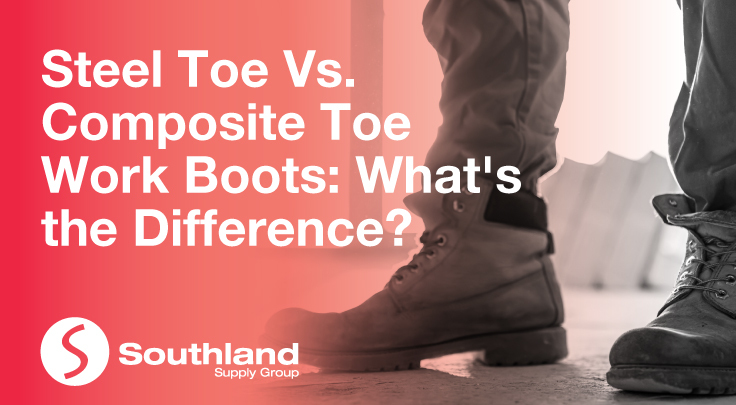
If you’re planning to purchase a pair of new safety boots, it is important to know a little about what you are buying. Two main categories of safety boots are steel toe cap boots and composite toe cap boots, and both have some strengths and advantages.
Steel Toe Work Boots
Steel toe cap safety boots feature heavy-duty steel cover caps across the toes and have protected the toes of countless workers across the globe for many years. To many people, they are the ‘classic’ safety boot. To meet standards (AS/NZS 2210.1), these work boots are required to provide protection against 200J of energy and bear a compression load of at least 15kN.
Advantages of Steel Toe Work Boots
- Well recognised in the industry.
- Very good puncture resistance.
- Shatter-proof
- Higher ‘flat’ protection, making them better for environments with very heavy hazards, such as machinery handling.
Disadvantages of Steel Toe Work Boots
- Heavier than composite toe boots, which may cause foot fatigue at the end of a working day.
- Not recommended for use in extreme hot or cold conditions due to the heat conductivity of steel.
Composite Cap Work Boots
Composite cap work boots are a newer technology but are quickly becoming popular as they offer a number of benefits over steel. Composite toe caps are made from non-metal materials such as thermoplastic polyurethane (TPU), Kevlar or carbon fibre.
Advantages of Composite Caps Work Boots:
- Generally lighter than steel caps. This means that they offer a higher level of comfort for those on their feet for long periods.
- Non-metal materials don’t set off metal detectors, making them great for those who travel through airports or work in airports and other high-security areas.
- Superior electrical resistance for those working around live wires.
- Provide better thermal insulation, meaning your toes stay warmer in the cold and cooler in the heat.
Disadvantages of Composite Caps Work Boots:
- Often more expensive than steel toe work boots.
- Lower puncture resistance to steel.
Which Safety Boots Should You Choose?
Your choice of safety boots is dependent on a few factors specific to your work environment as well as some personal preferences. Keep in mind that toe caps are not necessarily the only factors to bear in mind when choosing safety boots. For instance, those working with electricity may need to wear either conductive, non-conductive, or anti-static footwear to minimise any chance of electrical shock or explosion, rather than just choosing based on the toe cap. However, this guide may prove useful for anyone who needs a pair of work boots for general protection, whether at work or for other activities such as DIY.
If you are in the market for some new safety footwear, why not check out our selection of work boots from the leading brands like Mongrel Boots, Steel Blue, Oliver Boots, Blundstone Boots and more!
